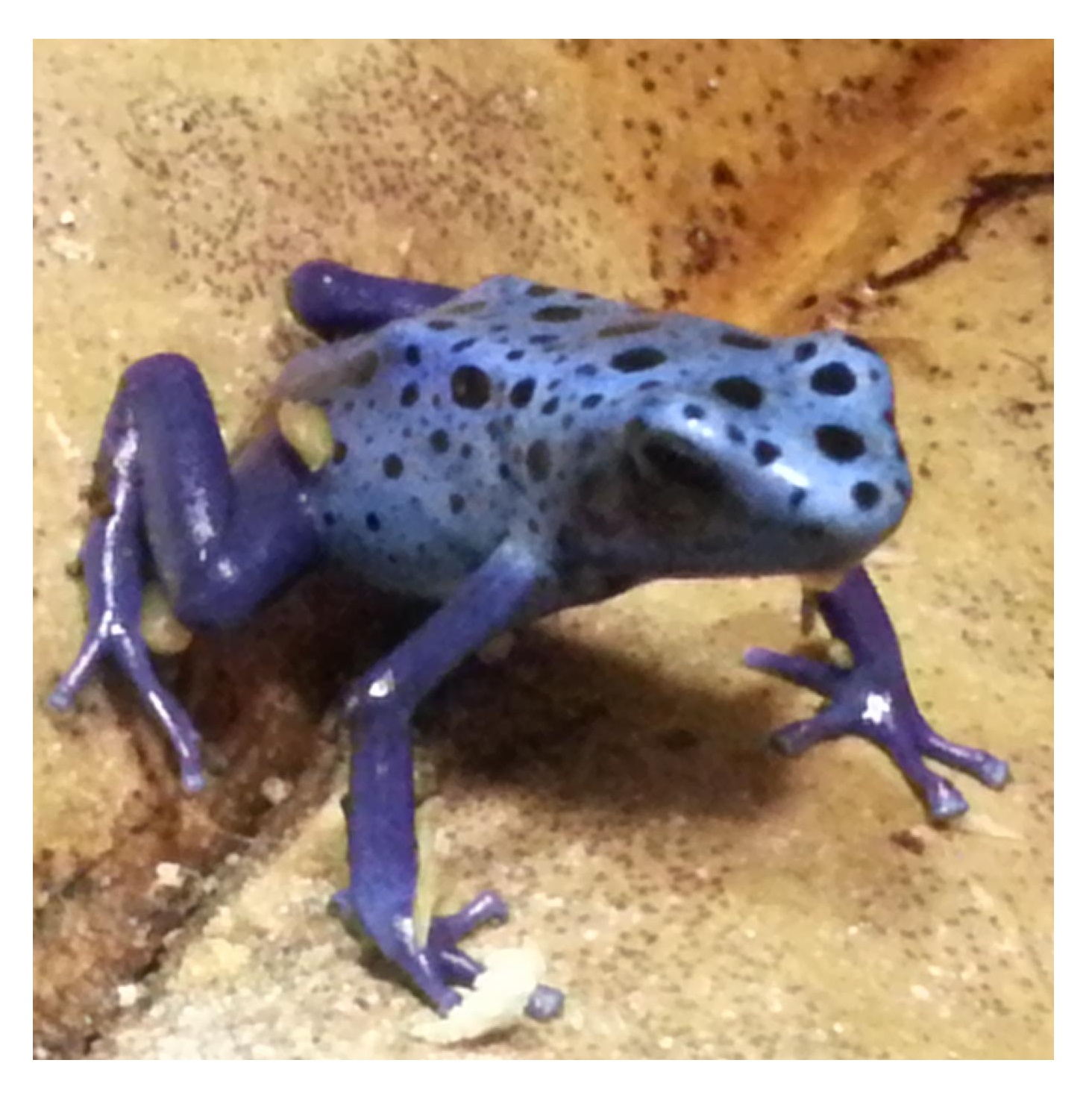Interactions
Toxicity
I'm going to go ahead and address the toxicity of
the Poison dart frog here. Poison dart frogs,
as their name implies, are poisonous. Venomous
organisms such as snakes have active delivery
systems where they synthesize and deliver their toxins to prey items.
Poisonous organisms have passive delivery systems,
which means, for Dendrobatidae frogs in particular,
that any poisons found in insects or prey items of
the frog are absorbed and then secreted through the
frog's own skin. This means that, in
captivity, these frogs are not poisonous since their
captive diets usually lack the toxin producing
insects they consume in the wild. (Many of
these insects either create their own toxins or also
obtain them from outside sources such as plants and
fungi.) The frog's skin is moist, which allows
for a single touch of a mucous membrane (such as the
inside of a predator's mouth) to be quickly affected
by the collected toxins. Dart frogs can store
these alkaloid toxins without being harmed
themselves. An alkaloid toxin can be one of
many toxins with a nitrogen molecule within a
heterocyclic ring.
synthesize and deliver their toxins to prey items.
Poisonous organisms have passive delivery systems,
which means, for Dendrobatidae frogs in particular,
that any poisons found in insects or prey items of
the frog are absorbed and then secreted through the
frog's own skin. This means that, in
captivity, these frogs are not poisonous since their
captive diets usually lack the toxin producing
insects they consume in the wild. (Many of
these insects either create their own toxins or also
obtain them from outside sources such as plants and
fungi.) The frog's skin is moist, which allows
for a single touch of a mucous membrane (such as the
inside of a predator's mouth) to be quickly affected
by the collected toxins. Dart frogs can store
these alkaloid toxins without being harmed
themselves. An alkaloid toxin can be one of
many toxins with a nitrogen molecule within a
heterocyclic ring.
Dendrobatidae frogs all have pumiliotoxins, which
act as a stimulant to the cardiac system of other
creatures. These toxins force the release of
intercellular calcium ions and prevents their
reuptake which cause hyperactivity, hindrances to movement.
hypersensitivity, partial to full paralysis, and in
more severe exposures convulsions and death.
Calcium dependant channels in the heart and skeletal
muscles are inhibited by this toxin which causes the
entire system to shut down in severe cases of
poisoning.
hyperactivity, hindrances to movement.
hypersensitivity, partial to full paralysis, and in
more severe exposures convulsions and death.
Calcium dependant channels in the heart and skeletal
muscles are inhibited by this toxin which causes the
entire system to shut down in severe cases of
poisoning.
Frogs of the genus Phyllobates use a stronger form of toxin, batrachotoxin, (which means frog toxin), which affects sodium channels in the brain much like the pumiliotoxin affects calcium ions in the muscular structures. The difference is that failure of neurons to channel sodium results in a blockage of impulses, which disconnects the body from any form of activity and usually causes the heart to fail. Frogs from this genus are known to be used for poisonous arrows by indigenous people, but frogs from the Dendrobates genus are not. (Possibly because their toxin is not as potent and also most likely due to the relative isolated range of these frogs.) To find out more about frog toxins used as weapons, visit dendroworks and read the page about how indigenous peoples have been using frog poisons for centuries to hunt.
Interactions with other organisms
The Dyeing dart frog does not exhibit any mutualistic, commensal or parasitic behavior with any other organisms. It is, however, predatory in respect to its food source which is primarily insects. More information about its nutrition can be found on the Nutrition page. Feel free to skip ahead. Despite being poisonous, the Dyeing dart frog in the adult form is preyed upon by larger spiders such as the Goliath tarantula and the Brazilian wandering spider and various snakes. In the tadpole form these frogs are susceptible to not only snakes but also Dragonflies and Mayflies. Other predatory animals such as the Toucan, while they eat frogs in general, do not include these poisonous organisms within their diet- as they would, of course, perish.